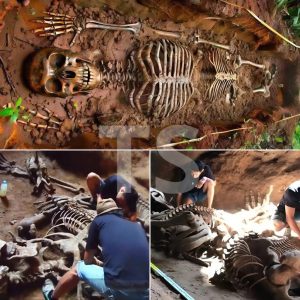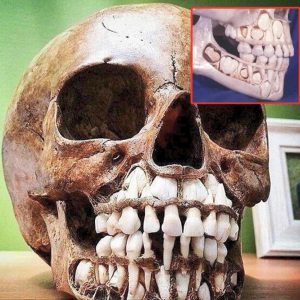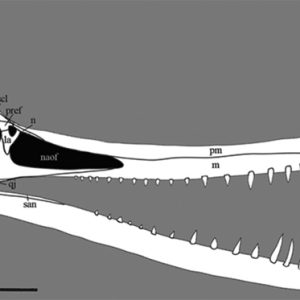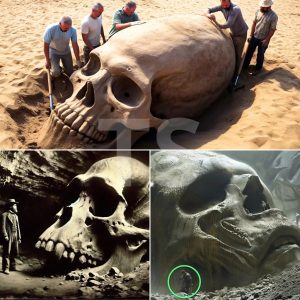A perfectly preserved cave lion cub found frozen in Siberia has been confirmed as a female that died 28,000 years ago, by a new study into the creatures remains.
It was one of the best preserved ice age animals ever found and has been named Sparta by the team from the Centre for Palaeogenetics, Stockholm, Sweden.
The cave lion cub, less than two months old when she died, was found covered in golden fur and even had teeth, skin, soft tissue and whiskers still intact.
The lion had been preserved in permafrost and was one of two extinct big cat cubs discovered in the same area by mammoth tusk hunters by the Semyuelyakh River.
It was originally thought the pair were siblings as they were found just 49ft apart, but the new study revealed Sparta lived 15,000 years later than the other cub.
Boris, the older of the two creatures, is 43,448 years old, according to radio carbon dating, and was also between one and two months old when it died.

A perfectly preserved cave lion cub found frozen in Siberia has been confirmed as a female that died 28,000 years ago, by a new study into the creatures remains

The tomographic images of Sparta’s body from the left side: (a) skin; (b) skull and spine
Scans of the pair, by Russian and Japanese researchers, revealed no evidence they were killed by a predator.
However, the scans did reveal skull damage, dislocation of ribs and other issues with their skeletons, the team said.
‘Given their preservation they must have been buried very quickly, researcher Love Dalen told CNN.
‘So maybe they died in a mudslide, or fell into a crack in the permafrost,’ he added.
‘Permafrost forms large cracks due to seasonal thawing and freezing.’
They were discovered in eastern Siberia, Russia between 2017 and 2018.
Cave lions in Europe are now extinct but once roamed throughout Europe and to Alaska until the land bridge closed 10,000 years ago.
As an adult it would have measured up to 3ft 9 inches tall and been as much as 6ft 9 inches long without a tail.
We know about them through both fossil records and cave art.
The two discovered in Siberia were so well preserved, researchers could even study the coat colouring.
Sparta had a slightly more dull, greyish coat than Boris, the team explained.
‘The general tone of the colour of the fur coat of Sparta is greyish to light brown, whereas, in Boris, the fur is generally lighter, greyish yellowish,’ they wrote.
‘It is, therefore, possible that light colouration prevailed with age in cave lions and was adaptive for northern snow-covered landscapes.’
Of the pair Sparta, the younger of the cubs, is ‘probably the best preserved Ice Age animal ever found,’ explained Dalen in an interview with CNN.
It said it is more or less undamaged apart from slightly ruffled fur, but Boris is more damaged, although still in good condition considering its age.
They likely fell in a mudslide and landed in a crack in the permafrost, the team predict. The pair lived at a time when Siberia was populated with mammoths, tundra wolves, bears, woolly rhinoceroses, bison and cave lions.
They were a similar size to modern African lions and while their coat was similar, they had a long thick undercoat that may have helped in the cold climate.

There have been a number of cave lion cubs discovered in the permafrost, revealing more about the history of the region

A 2D image of Boris’ inside structure. Green arrows show the testicle-like organs
There has been a flurry of discoveries in the region of extinct animal fossils, including woolly rhino, cave bear and a perfectly preserved canine puppy.
They would have once roamed the Russian steppe and their remains are usually found by hunters who blast tunnels using high-pressure water hoses in the permafrost in search of mammoth tusks.
The hunting of these tusks is a lucrative endeavour, although controversial as they are prized by ivory carvers who can’t get elephant tusks.
As these hunters have developed advanced techniques for searching in the permafrost, scientists have started building a working relationship with them to unearth more astonishing finds.
 A 3D image of Sparta is sectioned to show the inside structure. Green arrow shows the location of the uterus-like organ
A 3D image of Sparta is sectioned to show the inside structure. Green arrow shows the location of the uterus-like organ
Image a here is Sparta, b is the male Boris. Photos of lion cubs’ heads from the side: (c) Sparta; (d) Boris; (e) Sparta mummy as seen from above; (f) dark brown ‘brush’ of Sparta’s tail
Study co-author, Valery Plotnikov told the Natural History Museum he started working with them in 2017 in very cold, dangerous conditions.
He spent an entire month with the tusk hunters, losing 22lb in weight, but forged relationships that led to major scientific discoveries including the cave lions cubs, a wolf head and mammoths.
There flurry of finds in the last decade has also been put down to a warming climate, with climate change causing warmer summers in the Arctic weakening the permafrost.
Dalen told CNN that the main reason for more discoveries is increased demand for mammoth ivory, but climate change and melting made the season longer.

The researchers said evidence of cave lions was first seen through cave paintings made by ancient humans, before the first fossils were discovered
They used CT scans and genetic tests to determine that the younger cub was a girl and the older cub, Boris was a boy.
The next step is to completely sequence the DNA of Sparta to reveal the evolutionary history of this creature and cave lions generally.
Doing so could tell us the population size and genetic features of these long extinct creatures once endemic to Europe.
The findings of the study have been published in the journal Quaternary





